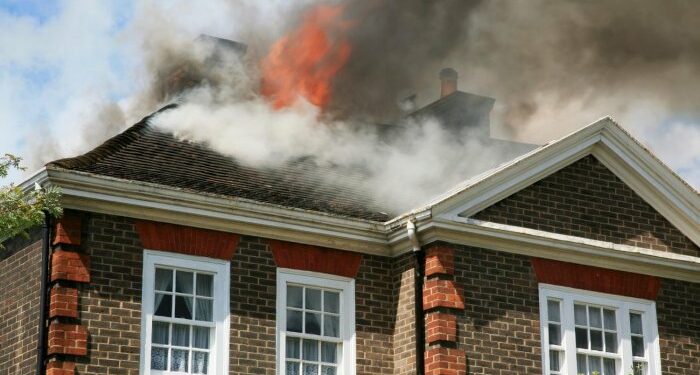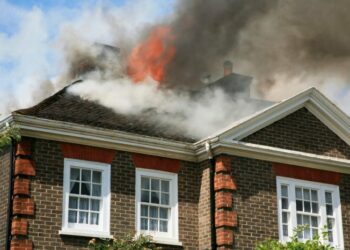Delving into the realm of fire damage restoration services, this article sheds light on the essential steps and tools required to restore properties post-fire. Brace yourself for a journey through the intricacies of fire damage restoration and the significance of immediate action.
Importance of Fire Damage Restoration Services
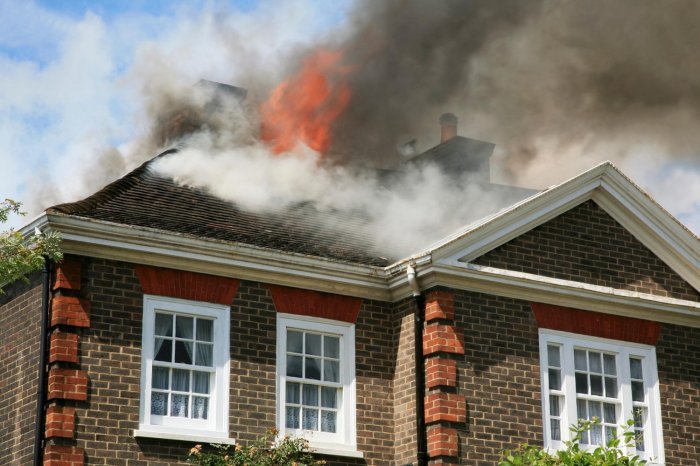
After a fire incident, immediate restoration is crucial to minimize further damage and ensure the safety of the property and its occupants.
Risks of Delaying Restoration Services Post-Fire
- Structural Damage: Delaying restoration can lead to increased structural damage, making the property unsafe for habitation.
- Mold Growth: Moisture from firefighting efforts can promote mold growth if not properly addressed in a timely manner.
- Soot and Smoke Residue: Lingering soot and smoke residue can cause long-term health hazards if not properly cleaned up promptly.
Benefits of Professional Fire Damage Restoration Services
- Rapid Response: Professional restoration services can respond quickly to assess the damage and start the restoration process immediately.
- Expertise: Trained professionals have the knowledge and experience to handle fire damage restoration efficiently and effectively.
- Specialized Equipment: Restoration companies have specialized equipment to clean up and restore the property after a fire, ensuring thorough restoration.
Process of Fire Damage Restoration
When it comes to fire damage restoration, there are specific steps that professionals follow to assess the extent of the damage and restore properties back to their pre-fire condition. Let's dive into the typical process involved in fire damage restoration.
Assessment of Fire Damage
Before beginning the restoration process, professionals need to assess the extent of the fire damage. This involves:
- Inspecting the property to determine the areas affected by fire, smoke, and soot.
- Evaluating the structural integrity of the building to ensure it is safe for restoration work.
- Documenting the damage for insurance purposes and creating a detailed restoration plan.
Cleaning and Restoration Techniques
Once the assessment is complete, restoration professionals use a variety of techniques to clean and restore properties damaged by fire. These techniques include:
- Smoke and soot removal using specialized equipment and cleaning agents.
- Structural drying to prevent mold growth and further damage.
- Odor removal through air scrubbers, ozone treatments, and thermal fogging.
- Repairing or replacing damaged materials such as drywall, flooring, and insulation.
- Restoring personal belongings through cleaning, deodorization, and restoration techniques.
Equipment and Tools Used in Fire Damage Restoration
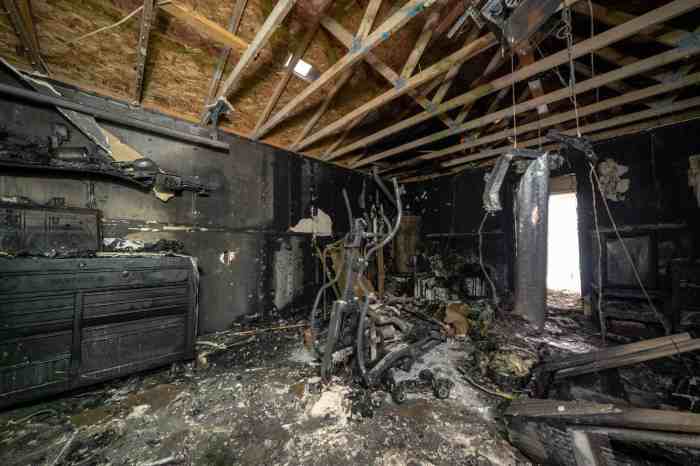
When it comes to fire damage restoration, having the right equipment and tools is essential for a successful restoration process. These tools not only help in removing debris and contaminants but also aid in drying and restoring the affected area efficiently.
Common Equipment and Tools
- Air Scrubbers: These machines help in removing smoke particles and odors from the air, improving indoor air quality.
- Dehumidifiers: Dehumidifiers are used to extract excess moisture from the air and surfaces, preventing mold growth.
- HEPA Vacuums: High-efficiency particulate air (HEPA) vacuums are used to clean surfaces and remove soot and debris effectively.
- Ozone Generators: Ozone generators help in eliminating odors by producing ozone, which breaks down odor-causing molecules.
- Thermal Foggers: Thermal foggers are used to distribute deodorizing agents in the air to neutralize odors.
Technology Advancements in Fire Damage Restoration Tools
With technological advancements, fire damage restoration tools have become more efficient and effective in restoring properties after a fire. Advanced tools such as infrared cameras are used to detect hidden moisture or hot spots, ensuring thorough drying and preventing secondary damage.
Specialized Equipment for Efficient Restoration Processes
- Moisture Meters: Moisture meters help in measuring the moisture content of materials, guiding the restoration professionals in determining the extent of water damage.
- Hydroxyl Generators: Hydroxyl generators are used to eliminate odors and purify the air without the need for occupants to vacate the premises.
- Injection Dryers: These specialized tools are used to dry hard-to-reach areas such as wall cavities and under flooring, ensuring thorough drying and preventing mold growth.
Insurance and Fire Damage Restoration
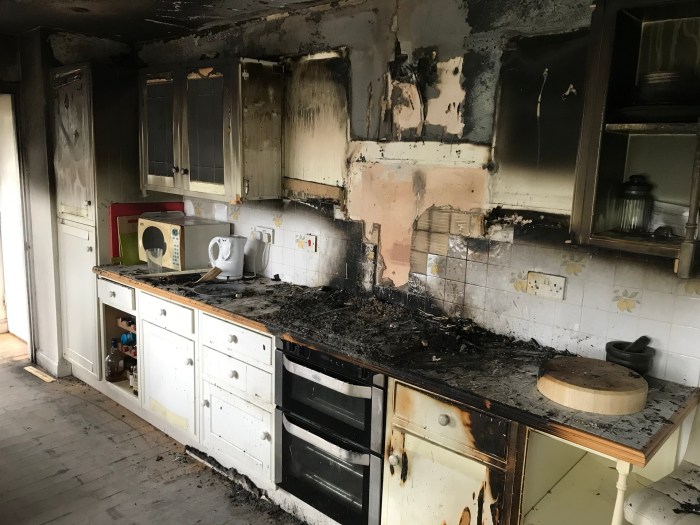
When it comes to dealing with the aftermath of a fire, insurance coverage plays a crucial role in the restoration process. Understanding how insurance works for fire damage restoration is essential for homeowners and businesses to navigate the claims process effectively.
Insurance Coverage for Fire Damage Restoration
- Insurance policies typically cover fire damage restoration, but the extent of coverage may vary depending on the policy and specific circumstances.
- It is important to review your insurance policy to understand what is covered and what documentation is needed to file a claim for fire damage restoration.
- Public adjusters or restoration companies can assist in assessing the damage and documenting it properly for insurance purposes.
Importance of Documenting Damage for Insurance Claims
- Documenting the extent of the fire damage is crucial for insurance claims to ensure that you receive the appropriate coverage for restoration costs.
- Take photos and videos of the damage, make a detailed inventory of items lost or damaged, and keep receipts for any expenses related to the restoration process.
- Thorough documentation can help expedite the claims process and provide evidence to support your claim with the insurance provider.
Role of Restoration Companies in Working with Insurance Providers
- Restoration companies play a vital role in working with insurance providers to assess the damage, develop a restoration plan, and provide cost estimates for the repairs.
- They can liaise with the insurance adjuster to ensure that all necessary documentation is provided and that the restoration work is completed according to the insurance policy guidelines.
- Having a professional restoration company on your side can help streamline the insurance claims process and ensure that you receive fair compensation for the fire damage restoration.
Preventive Measures to Minimize Fire Damage
Fire prevention is essential to minimize the risk of fire damage in residential and commercial properties. By implementing proper fire safety measures and regular maintenance, you can significantly reduce the chances of a fire breaking out and causing extensive damage.
Importance of Fire Safety Measures
- Install smoke detectors in key areas of your property and ensure they are in working condition at all times.
- Have fire extinguishers readily available in easily accessible locations throughout the property.
- Develop and practice a fire escape plan with all occupants to ensure everyone knows what to do in case of a fire.
- Keep flammable materials and sources of ignition away from each other to prevent accidental fires.
Significance of Regular Maintenance
Regular maintenance of electrical systems, heating equipment, and appliances can help identify potential fire hazards before they escalate. Here are some key maintenance tasks to reduce fire risks:
- Inspect and clean chimneys and vents regularly to prevent the buildup of flammable materials.
- Check electrical wiring for any signs of damage or wear and tear, and repair or replace as needed.
- Test smoke detectors and carbon monoxide alarms monthly to ensure they are functioning correctly.
- Keep a clear space around heating equipment and appliances to prevent overheating and potential fire hazards.
Final Review
As we draw the curtains on our discussion about fire damage restoration services, remember that prompt restoration is key to salvaging your property. Let this guide serve as a beacon of hope in navigating the aftermath of a fire incident.
Query Resolution
What should I do immediately after a fire incident?
After ensuring everyone's safety, contact fire damage restoration professionals to assess and start the restoration process promptly.
Is it necessary to document all the damage for insurance claims?
Yes, thorough documentation of the fire damage is crucial for insurance claims to ensure proper coverage and reimbursement.
How can regular maintenance help in reducing fire risks?
Regular maintenance of electrical systems, smoke detectors, and fire extinguishers can significantly reduce the chances of fire incidents.

